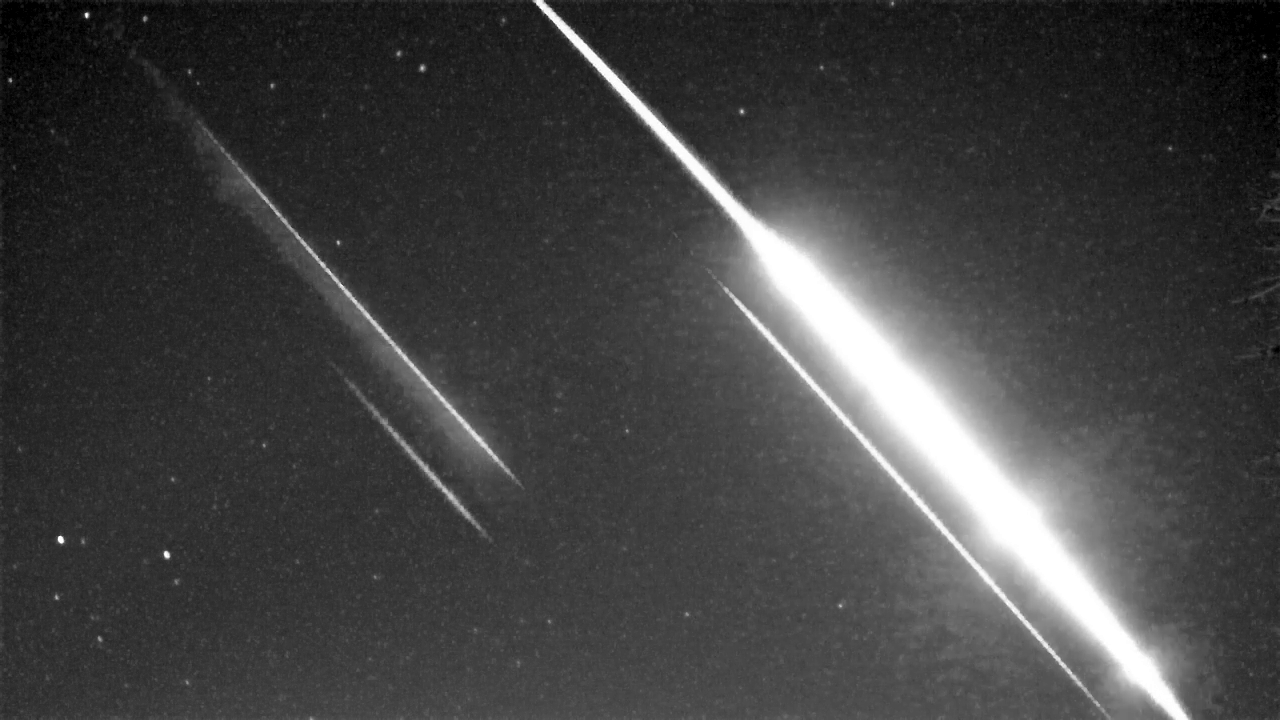At 11:37 PM on Sunday, April 17th, 2022, a brilliant fireball was seen throughout southern Ontario by a network of all-sky cameras. According to the video data, bits of the meteor are most likely to have landed near the eastern coast of Lake Simcoe, approximately north of the town of Argyle.
 Fireball (brightest light) observed by the CA000P Global Meteor Network camera in Bowmanville, Ontario. Additional streaks are lens reflections. Image Credit: Miguel Preciado.
Fireball (brightest light) observed by the CA000P Global Meteor Network camera in Bowmanville, Ontario. Additional streaks are lens reflections. Image Credit: Miguel Preciado.
The physics and astronomy department at Western University has an all-sky camera network that continually scans the sky for meteors. Denis Vida, a meteor expert, verified that more than a dozen all-sky cameras from Western’s Southern Ontario Meteor Network (SOMN) as well as a handful of citizen scientist-operated cameras from Global Meteor Network (GMN) photographed the event north of Toronto late Sunday evening.
This fireball was particularly significant because it was moving slowly, was on an asteroidal orbit and ended very low in the atmosphere. These are all good indicators that material survived.
Denis Vida, Astronomy Postdoctoral Associate, Physics and Astronomy Department, Western University
At just 29 kilometers altitude, the fireball was still emitting light. Another element that substantially favors meteorite survival is the extremely steep entrance angle (about 30 degrees from the vertical).
Taken together, these factors suggest many small meteorites have made it to the ground.
Denis Vida, Astronomy Postdoctoral Associate, Physics and Astronomy Department, Western University
This event is also significant since Western’s meteor study group has high-resolution video data of the meteor’s transit through the atmosphere, allowing them to compute the origin of the rock in the solar system. According to new results, the fireball first became visible at a height of 90 kilometers and traveled nearly due north.
The initial mass is believed to have been around 10 kilograms and we would expect tens to hundreds of grams of material on the ground. Meteorites are of great interest to researchers as studying them helps us to understand the formation and evolution of the solar system.
Denis Vida, Astronomy Postdoctoral Associate, Physics and Astronomy Department, Western University
Meteorites are distinguished by their dark, scalloped surfaces. They are usually denser than “normal” rocks and are frequently attracted to magnets owing to their metal concentration. Meteorites are not harmful; however, they should be stored in a clean plastic bag or wrapped in aluminum foil if found.
To help sustain their scientific worth, they should be handled as little as possible. Meteorites in Canada belong to the owner of the land where they are discovered. Before entering onto private territory to search, people should always acquire permission from the landowner.
Researchers at Western University and the Royal Ontario Museum would like to hear from anybody who was in the area of the potential meteorite fall and observed anything strange or discovered possible meteorites.
Bright fireball event near Lake Simcoe expected to have dropped meteorites
Video Credit: University of Western Ontario.